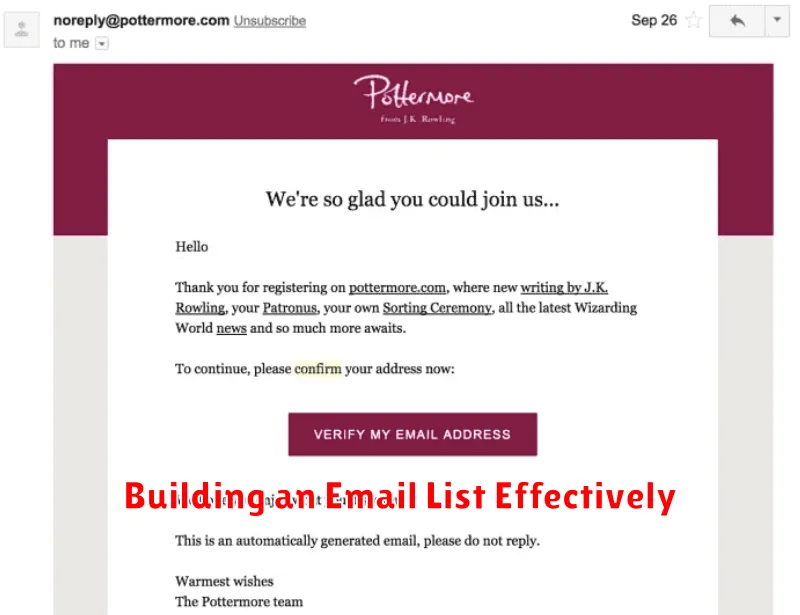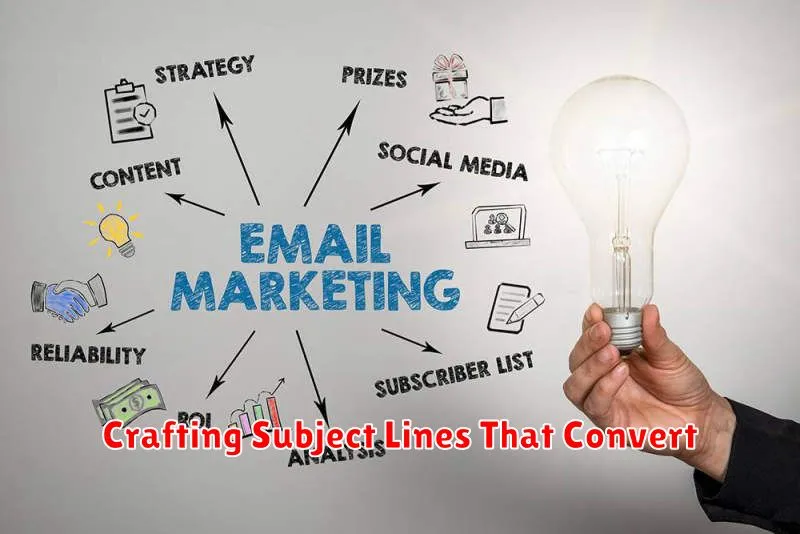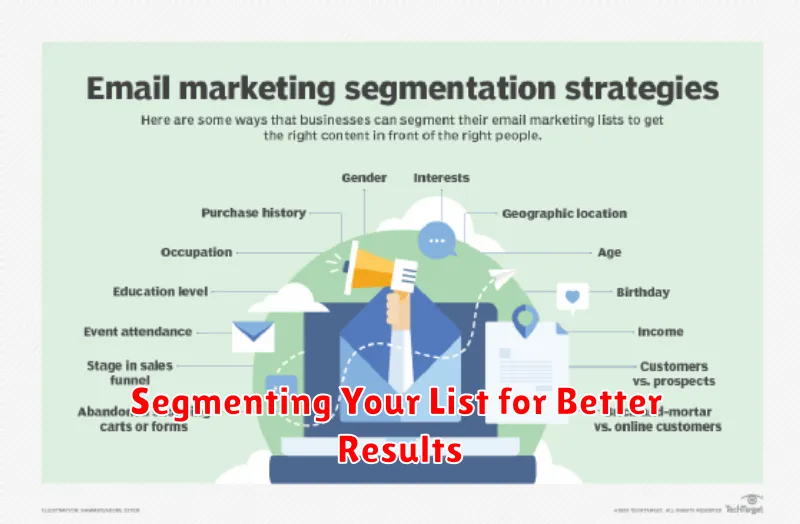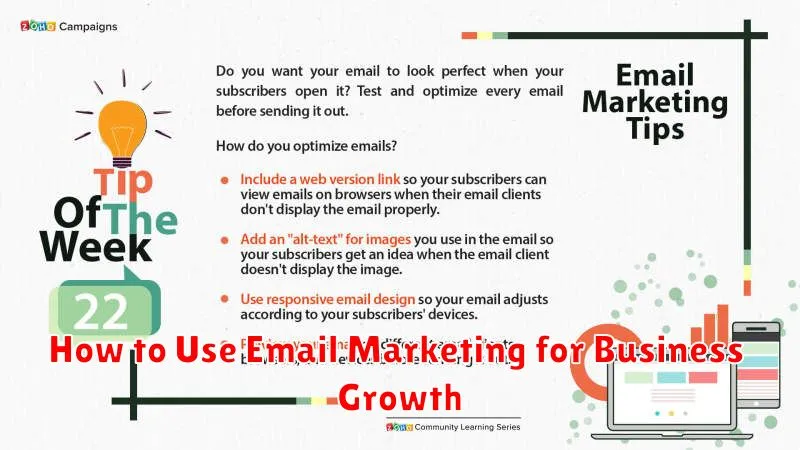In today’s digital age, email marketing remains a powerful tool for business growth. It offers a direct line of communication to your target audience, fostering customer engagement, driving sales conversions, and building lasting brand loyalty. This comprehensive guide will explore the essential strategies and tactics for leveraging email marketing effectively, enabling you to achieve significant business growth. From crafting compelling email campaigns to analyzing campaign performance and optimizing your email marketing strategy, we’ll cover everything you need to know to maximize your return on investment.
Whether you’re a small startup or an established enterprise, email marketing provides a cost-effective and scalable solution for reaching your business goals. Learn how to build a targeted email list, segment your audience for personalized messaging, create engaging email content, and track key email marketing metrics. By mastering the art of email marketing, you can unlock unprecedented opportunities for business growth and cultivate meaningful relationships with your customers. This guide will delve into the intricacies of email marketing, equipping you with the knowledge and skills to succeed in the competitive digital landscape.
Why Email Still Works
In today’s digital landscape, with the rise of social media and instant messaging, it’s easy to question the relevance of email marketing. However, email remains a powerful and cost-effective tool for business growth. Its enduring success can be attributed to several key factors.
Email provides a direct line of communication with your audience. Unlike social media platforms where algorithms dictate visibility, email allows you to reach your subscribers directly in their inboxes. This fosters a sense of personal connection and builds stronger relationships.
Furthermore, email marketing offers measurable results. You can track open rates, click-through rates, and conversions, providing valuable insights into campaign performance and allowing you to refine your strategy over time. This data-driven approach ensures you are maximizing your return on investment.
Finally, email allows for targeted messaging. By segmenting your audience based on demographics, behavior, or preferences, you can tailor your content to their specific needs and interests. This personalized approach enhances engagement and drives conversions.
Understanding Your Audience
Knowing your audience is the cornerstone of effective email marketing. Without a clear understanding of who you’re communicating with, your messages are likely to fall flat.
Consider these key aspects:
- Demographics: Age, gender, location, occupation, and income level. This information helps tailor your message and offer relevant products or services.
- Psychographics: Values, interests, lifestyle choices, and attitudes. Understanding these allows you to connect with your audience on a deeper level.
- Online Behavior: How do they interact with your website and other online platforms? What content do they engage with? This reveals preferences and helps refine your email strategy.
By analyzing this data, you can segment your audience into specific groups and create targeted email campaigns. This ensures that your messages resonate with each recipient, increasing engagement and driving conversions.
Building an Email List Effectively

Building a robust email list is essential for successful email marketing. It provides a direct channel to communicate with potential and existing customers, fostering relationships and driving conversions. Several strategies can help you effectively grow your email list.
Offer valuable incentives. People are more likely to subscribe if they receive something in return. Consider offering lead magnets such as exclusive discounts, free ebooks, webinars, or downloadable resources.
Use compelling signup forms. Place visually appealing and concise signup forms strategically on your website. High-traffic areas like the homepage, blog posts, and contact page are ideal locations.
Leverage social media. Promote your email list and its benefits across your social media platforms. Run contests or giveaways to incentivize sign-ups.
Ensure mobile optimization. Make sure your signup forms and email content are mobile-friendly, as a significant portion of users access the internet through mobile devices.
Crafting Subject Lines That Convert

The subject line is the first, and often the only, impression you make on a potential customer. A compelling subject line can significantly impact your email open rates and ultimately, your conversion rates. It’s the gateway to your message, acting as the deciding factor whether a recipient chooses to engage or sends your email straight to the trash.
Brevity is key. Aim for subject lines that are concise and to the point, ideally around 50 characters. This ensures they are easily readable on various devices, especially mobile phones.
Create a sense of urgency or exclusivity. Phrases like “limited-time offer” or “exclusive access” can pique interest and encourage immediate action. However, avoid overuse as it can decrease credibility.
Personalization can also boost open rates. Using the recipient’s name or referencing their past interactions with your business can make the email feel more relevant and less like a generic blast.
A/B testing different subject lines can provide valuable data on what resonates best with your audience. Experiment with various approaches and track your results to refine your strategy over time.
Segmenting Your List for Better Results

Segmentation is crucial for maximizing the effectiveness of your email marketing campaigns. Sending generic emails to your entire list often results in low engagement and conversions. By dividing your subscribers into smaller, more homogenous groups, you can tailor your messaging to their specific needs and interests.
Several criteria can be used to segment your list. Demographics such as age, gender, and location are common starting points. You can also segment based on behavior, such as past purchases, website activity, or email engagement (opens and clicks). Additionally, segmenting by interests, based on signup forms or surveys, allows you to deliver highly relevant content.
Example Segmentation Criteria:
- Demographics: Location (city, state), Age, Gender
- Behavior: Purchase history (product category, amount spent), Website activity (pages visited), Email engagement (opens, clicks)
- Interests: Products/services of interest, Industry, Role
By using these segmentation strategies, your emails will be more likely to resonate with your audience, leading to increased open rates, click-through rates, and ultimately, conversions.
Using Automation to Save Time
Email marketing automation can significantly reduce the time spent on repetitive tasks, freeing you to focus on strategic initiatives. Automation allows you to pre-schedule email campaigns, send personalized messages triggered by specific actions, and manage your subscriber lists more efficiently.
Consider automating these key tasks:
- Welcome Emails: Greet new subscribers and introduce them to your brand.
- Abandoned Cart Reminders: Encourage customers to complete their purchases.
- Post-Purchase Follow-Ups: Request feedback and offer related products.
- Newsletter Distribution: Schedule regular newsletters to keep your audience engaged.
By automating these tasks, you can ensure consistent communication with your audience without constant manual intervention. This efficiency boosts productivity and allows you to dedicate more time to crafting compelling content and analyzing campaign performance.
Tracking and Optimizing Performance
Tracking key metrics is crucial for understanding the effectiveness of your email marketing campaigns. By monitoring these metrics, you can identify areas for improvement and maximize your return on investment.
Some of the most important email marketing metrics include:
- Open rate: The percentage of recipients who opened your email.
- Click-through rate (CTR): The percentage of recipients who clicked on a link in your email.
- Conversion rate: The percentage of recipients who completed a desired action, such as making a purchase or filling out a form.
- Bounce rate: The percentage of emails that were not delivered to the recipient’s inbox.
- Unsubscribe rate: The percentage of recipients who unsubscribed from your email list.
Once you have a good understanding of your email marketing metrics, you can begin to optimize your campaigns for better performance. This might involve A/B testing different subject lines, email content, or calls to action. Regularly analyzing data enables continuous improvement and better results.

